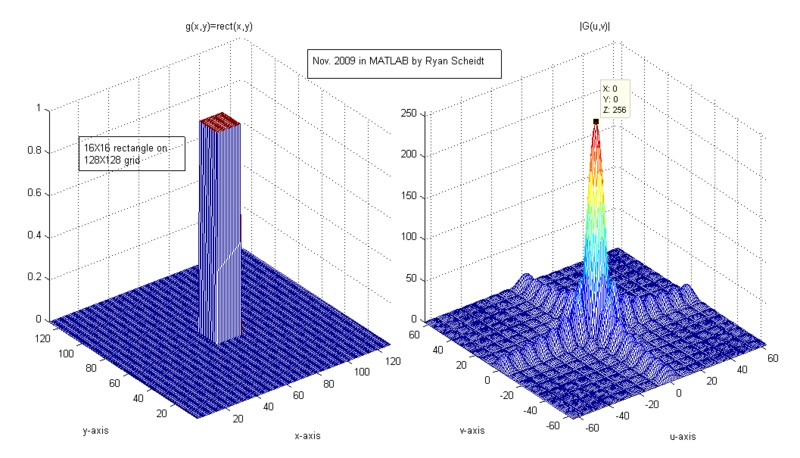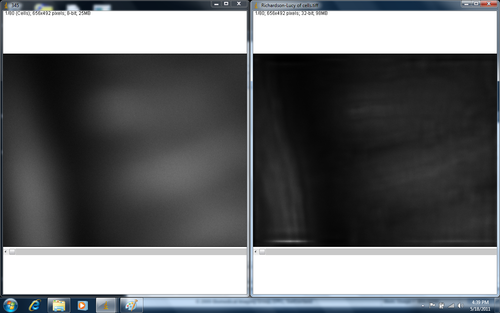Difference between revisions of "Spring 2011:3D PSF lab:Kristin"
Kristin Kuhn (Talk | contribs) (Created page with "Because lenses aren't infinite, any time a camera looks at an image, it is like the image is being multiplied with a ''rect'' function (in 1-D). In Fourier space, the spectrum of...") |
Kristin Kuhn (Talk | contribs) |
||
| Line 21: | Line 21: | ||
| − | The improvement is especially noticeable in the first few frames. Even in the | + | The improvement is especially noticeable in the first few frames. Even in the fourth image, you can see the increased resolution for the nodules of light in the elongated structure on the left. Note the frame of high-frequency noise around the deconvolved image. |
So why don't we do this all the time? Unfortunately, it is hard to eliminate noise with this method, because once you filter an image for noise, the PSF may no longer apply. Thus, you can't "get back" to the original image, and you have distortions. | So why don't we do this all the time? Unfortunately, it is hard to eliminate noise with this method, because once you filter an image for noise, the PSF may no longer apply. Thus, you can't "get back" to the original image, and you have distortions. | ||
Revision as of 21:22, 18 May 2011
Because lenses aren't infinite, any time a camera looks at an image, it is like the image is being multiplied with a rect function (in 1-D). In Fourier space, the spectrum of the image is convolved with a sinc function. This reduces your resolution, blurring sharp edges into smooth curves.
In 3D, this translates to the image being convolved with the point spread function.
3D equivalent of a rect function and its Fourier transform, the PSF. source: www.projectrhea.org
Theoretically, then, we should be able to deconvolve the image on our computer with this PSF, and get the "true" image with much higher resolution. This PSF can be obtained by taking an z-stack image of an approximate point source.
ImageJ was used to deconvolve the image - see Emmanuel's tutorial. Richardson-Lucy algorithm, 10 iterations.
Before/after images:
Left: original image. Right: deconvolved image.
The improvement is especially noticeable in the first few frames. Even in the fourth image, you can see the increased resolution for the nodules of light in the elongated structure on the left. Note the frame of high-frequency noise around the deconvolved image.
So why don't we do this all the time? Unfortunately, it is hard to eliminate noise with this method, because once you filter an image for noise, the PSF may no longer apply. Thus, you can't "get back" to the original image, and you have distortions.




